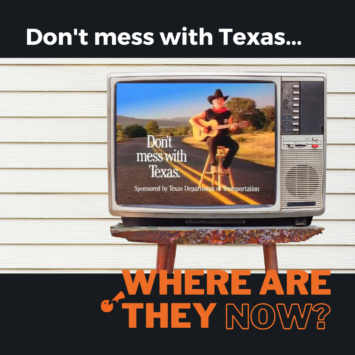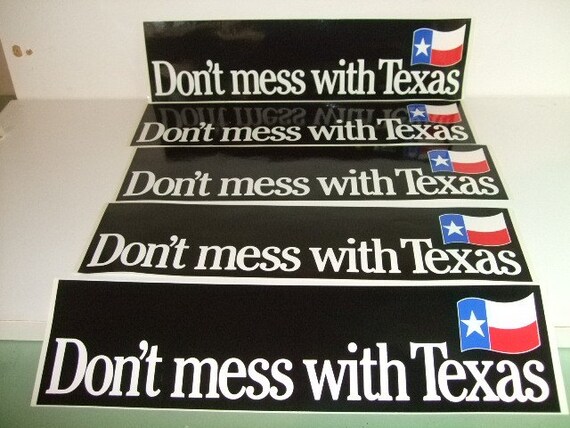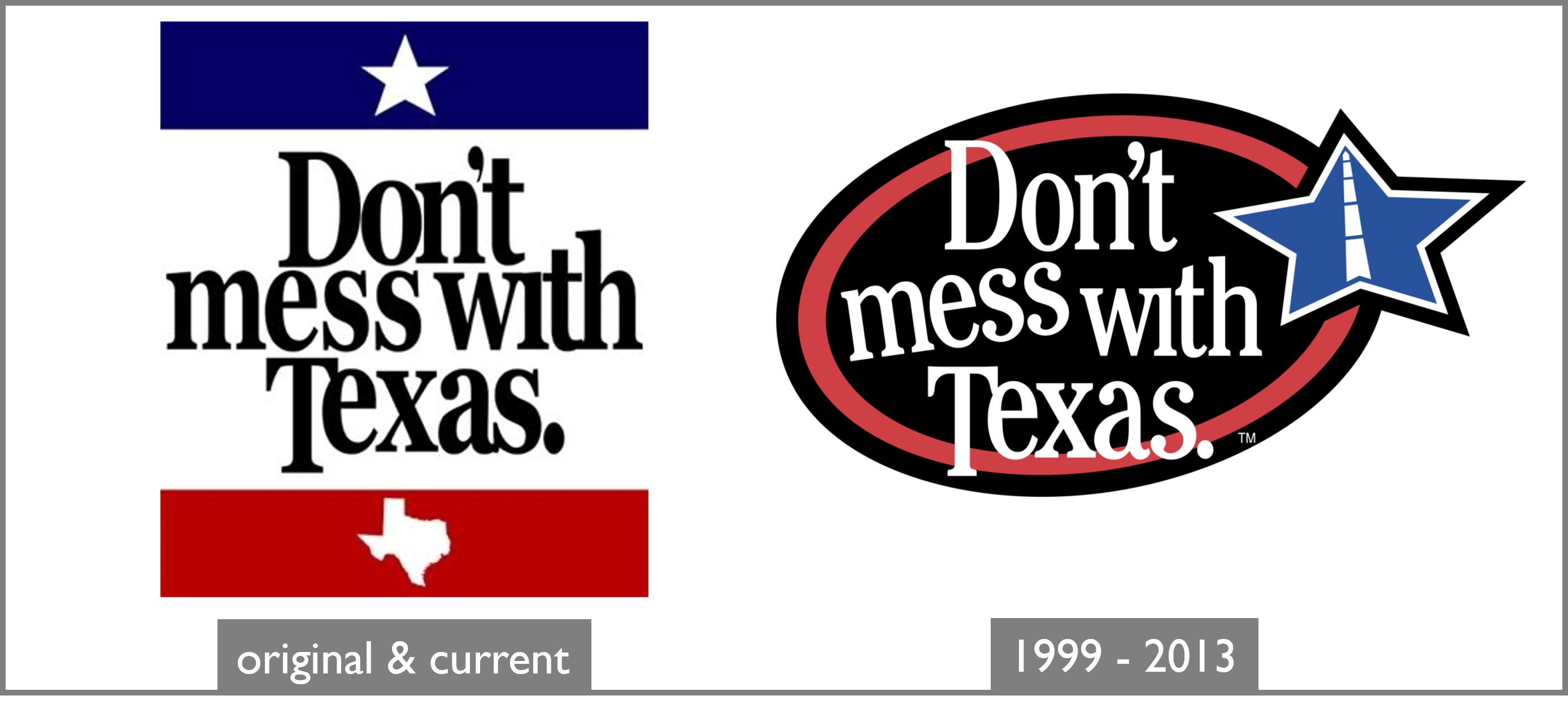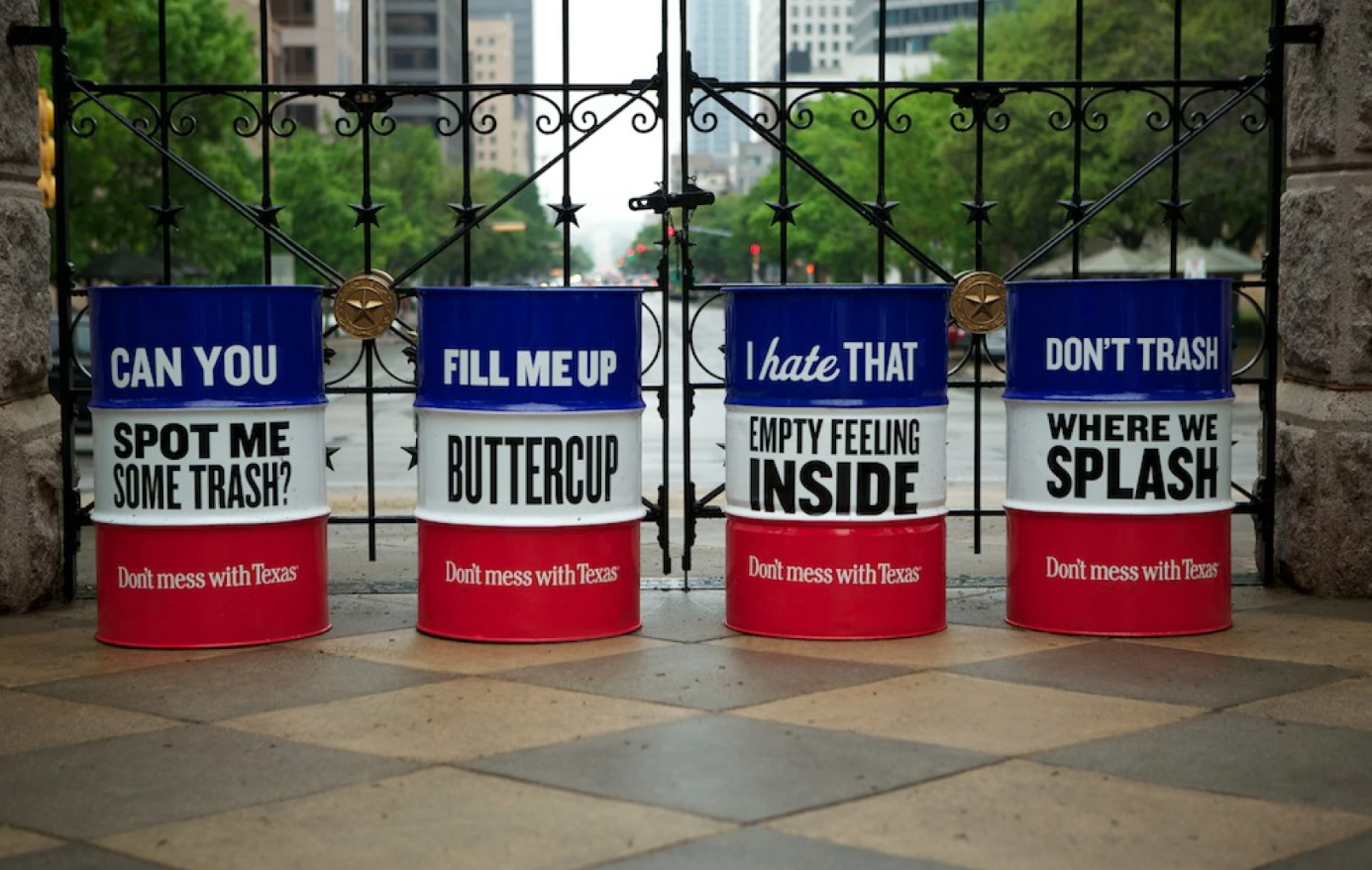
Don’t mess with Texas. Where are they now?
This email series is a throwback to behavior change campaigns that ran on TV and in magazines when I was a kid. Enjoy the nostalgia of old ads and the thrill of discovering where they are now!

Don’t mess with Texas.
Where are they now?
You may not be familiar with this campaign since it is specific to the state of Texas. But social marketers often feature it as a successful behavior change campaign, so I thought it would be helpful to dig into the details.
Here is a brief history lesson on the start of the campaign, courtesy of the Smithsonian Magazine’s 2017 article titled The Trashy Beginnings of “Don’t Mess with Texas.”
“In the late 1980s, the Texas Department of Transportation had a mess on its hands. It was spending $20 million annually on trash pick-up, and that number was increasing by about 17 percent year over year. Trash littered the highways and it only seemed to be getting worse – everything is bigger in Texas, after all. So the department put out a request for a marketing campaign to address the rubbish.
Tim McClure and his colleagues at Austin-based advertising agency GSD&M were just a few weeks away from the deadline, without a clever concept to pitch. On an early morning walk, McClure noted the trash in his own neighborhood and thought, “This is a mess,”—just like his mother used to say about his childhood bedroom. That’s when it hit him that his team was going about this the wrong way. Texans don’t talk about “litter” in their daily lives but they do say “mess,” and just like that “Don’t mess with Texas” was born.”
However, it wasn’t quite that easy.
Although the creative agency felt like they had a winning idea, their Department of Transportation client didn’t like the toughness and edginess of the slogan. They hoped for something more closely aligned with the long-running “Keep Texas Beautiful” tagline.
But the visible litter data showed that the major perpetrators of highway litter were young men between the ages of 16 to 34, and they are likely to appreciate a tough, edgy slogan.
Meaning it’s more important that the slogan resonates with the intended audience than with the client.
After some convincing, the Texas Department of Transportation (TxDOT) gave the green light to move forward with “Don’t mess with Texas,” which launched as a series of bumper stickers before the first TV commercial aired featuring Texas blues musician Stevie Ray Vaughn.
The ad became an instant hit among Texans.
Why mess with something that works?!
The “Don’t mess with Texas” campaign and slogan have run steadily since 1986 (37 years), with a new set of ads released nearly every year. Most ads feature Texas musicians singing an original song about keeping Texas clean by not littering.
You can view the campaign’s extensive archive here.
But did it work to reduce litter?
It did!
“When [litter control researcher, Daniel B.] Syrek counted Texas trash one year later, he found a 29 percent reduction in litter on the road. The next year it was down 54 percent and by 1990, it was down 72 percent from 1986.” (Smithsonian Mag)
Visible litter results collected over subsequent years continue to show varying reduction levels. Data from 2001 indicated that roadside litter had dropped 52% since 1995; 2005 data shows a 33% reduction in litter since 2001; 2013 data shows a 34% reduction in litter compared to 2009; and the most recent data from 2019 shows a 17% reduction in visible litter compared to 2013. (I could not find the 2009 report comparing litter amounts to the 2005 study.)
But here’s the funny (and frustrating) thing about a behavior change goal like littering.
IT NEVER ENDS!
While the campaign has been successful at reducing litter, it is also encountering a growing population in Texas, which means each year, there are more new members of the 16 to 34-year-old male population in the state that TxDOT needs to remind to toss their garbage in the bin and not on the highway.
This means the job of changing behaviors is never done.
Where are they now?
The campaign is going strong. Not only has it been running for nearly 40 years, but it also continues to capture the attention and interest of Texans.
Just last month, they released a new ad featuring Ethan Hawke (who is from Austin, Texas) with the campaign’s mascot, Darrell the Barrell.
Running a campaign for nearly four decades is not an easy feat. The Texas Department of Transportation has made a few adjustments along the way to keep the message fresh, relevant, and focused on litter.
Here are a few examples of things they’ve tried and changed through the years.
Logo redesign.
We’ve all been there. We get tired of looking at the same dang logo and decide it’s time for a fresh, new look.
In 1999, the TxDOT introduced a new design for the logo, which stuck around for 14 years before they returned to the original design. That’s not a bad run for a logo redesign, although I do prefer the original look they returned to.
Behavior clarification.
Consumer data collected in 1998 showed that 96% of Texans had heard the phrase “Don’t mess with Texas” (which is awesome), but only 61% of Texans knew the slogan meant don’t litter (yikes).
In response to this insight, TV commercials started to get more specific about the meaning of the slogan by adding the line, “Don’t mess with Texas means don’t litter.” By 2010, 82% of Texans understood that “Don’t mess with Texas” means “Don’t litter.” (Campaign history)
To further reinforce the message, the campaign incorporates more imagery of branded trashcans with Texas residents and celebrities properly disposing of their trash in the bins. This emphasis on trash cans led to the creation of Darrell the Barrell, the mascot, in 2013.
Cease and desist.
In addition to all the campaign work they’ve done, the Texas Department of Transportation has filed many lawsuits to prevent the slogan from being misused or being used for any initiative that isn’t related to keeping Texas litter-free.
Filing lawsuits is the opposite approach taken by the Got Milk? campaign, which was comfortable with the slogan being copied and spoofed.
Here is a funny summary of the lawsuits by The Daily Show with Jon Stewart.
Tough Love Takeaways
The “Don’t mess with Texas” campaign has a lot of factors contributing to its success. It’s more than just a creative and cleverly phrased slogan: it’s a comprehensive campaign that leverages influencers, pride of place, and injunctive norms to target a specific audience with a clear call to action.
Here are some tough love takeaways to remember when trying to create this secret sauce for your projects.
1. Behavior change is for the long haul.
Establishing a new social norm takes a long time. Maintaining that norm among a growing and changing audience to prevent regression will likely be indefinite. Embracing this truth helps us create more realistic outreach efforts and timelines.
2. Consistency doesn’t mean complacency.
Keeping a campaign slogan for nearly 40 years takes a lot of discipline. That level of consistency is valuable to any outreach effort as it helps build brand equity, affinity, and positive associations. But keeping things consistent doesn’t mean it’s the same old approach year after year. Fresh ideas and tactics keep a campaign relevant and newsworthy.
3. Start with a specific target audience.
16 to 34-year-old males are not the only people in Texas who litter, but if the campaign tried to reach every single resident and visitor, it would never have found its award-winning slogan and messaging approach. Focusing tightly on this segment opened the door to fun, creative, and engaging ads that resonated deeply with the audience and appealed to many others. A true win-win.





